Exactly 25 years ago, on April 19, 1996, "L'Arcano Incantatore" was released in Italian cinemas: a variation by Pupi Avati on the theme of a genre he himself conceived and codified - the "Po Valley Gothic". For the occasion we went to interview the director and we retraced the "making of" of the film and the final result.
di Thomas de Brabant
Exactly 25 years ago, on April 19, 1996, it was released in Italian cinemas The Arcanum Enchanter: variation of Pupi Avati on the theme of a genre he himself conceived and codified - the "Po Valley Gothic" (or, as the epigraph of his novel reports Mr. Devil: "Major gothic"). But it will be beyond national borders that the film will have the success and accolades it deserves: awarded in 1998 with the Silver Crow at the Brussels Fantastic Film Festival and with the jury's prize at the Puchon International Festival (South Korea), The Arcanum Enchanter it is still a point of reference for filmmakers and horror lovers all over the world.

Papal State, XNUMXth century: the ex seminarian Giacomo Vigetti tells, while confessing to a friar, the events that led him to damnation and madness. After inducing a girl to abort the child that would be born of their union, Giacomo turned to a mysterious lady, worshiper of the Evil One, to escape the Inquisition who hunts him. She, after having made a pact of blood with Giacomo, sends him to assist Monsignor: a very erudite expended in the odor of heresy, therefore confined to a rock, between woods and hills.
For years no one has seen the face Monsignor, left with only Nerio's company, the assistant who according to some rumors would have led him astray, dragging him into occult studies and practices (above all, the evocation of the dead); but news has arrived that Nerio is dead, so it will be Giacomo who will help the Monsignor, acting as his secretary and taking care of his correspondence with the converse of a convent in the vicinity of the fortress. Undecided whether to believe in Monsignor, who professes the lawfulness of his studies, or in an envoy of the Inquisition who warns him, James will discover that "the Evil One does not become a servant, if not to be a teacher".
"Esoteric tale from our countryside": the sign that appears in the opening credits summarizes the two founding elements of the avatiano "Gotico Padano": the rural world and its stories of fear (which were an inspiration, twenty years earlier, for The house with laughing windows). However, one of the two terms is contradicted here: although ideally set in the countryside around Bologna (the accent of some character actors is eloquent), the film was shot between Umbria and Lazio, mostly in the countryside between Todi and the Corbara lake [1]: and the fact that this lake, at the time in which the film is set, did not exist [2] contributes to the estrangement of the viewer - the same in which Giacomo sinks along the course of the film - transposing the story into a world that does not exist.
The arcane charmer it stands out among the Avatian horror films also because it marks a meeting point with the topos most common in the "cinema of fear": come on gothic novels that inspired the scripts, the stereotypes of Hammer productions [3]. While remaining a very original story, a highly recognizable creation by Pupi Avati, The arcane charmer abounds in "trademarks" of horror films: shots of the full moon, a ruined castle worthy of Count Dracula (not for nothing does a bat appear, which moreover drinks blood), a hermit who has some traits of a "scientist crazy ", crows that croak continuously (remembering the very fake meow that is heard in The house with laughing windows).
Mostly, is the darkest Avatian horror, at least up to Mr. Devil: among the distinctive features of The house from the windows laughing and Zeder instead there was an abundance of light (which took nothing away from their charge of restlessness). But if in the form it accepts some conventional traits, The arcane charmer it remains a very original and intelligent film: a unique and fascinating “esoteric tale”, an intriguing and frightening occult tale.

With the kindness that is one of his distinctive traits, M ° Avati himself - always happy to talk about one of his favorite creations [4] - gave us an interview, last March 19th - a month before the anniversary. Starting point of the conversation was The morning of the wizards. Introduction to fantastic realism, a famous essay published in 1960 by the Parisian journalist and occultist Louis Pauwels and the Russian-French scientist Jacques Bergier and fundamental reference of Avatian culture.
Pupi Avati - It strikes me that you found The morning of the wizards right after having participated in one of my films, because for me and for my training, for my panorama and for my imagination, it is a fundamental text.
Thomas de Brabant - Jung would speak of synchronism, "significant coincidence".
PA - That's right. Take that volume into account, it is nowhere to be found. The morning of the wizards it is part of that esoteric culture to which I have dedicated so much interest, even before Dan Brown arrived with his "Da Vinci Code" to throw it in caciara. But these are studies that still interest me, and that led me to carry out The arcane charmer. I came to the idea for that film from long studies, from a documentation that I have edited together with my brother for years… but it was also pure inspiration. Especially from inspiration.
Although Avati defies himself by claiming to have followed the most immediate inspiration, his films - and those of horror in particular - demonstrate a vast and profound culture [5]. just The arcane charmer, a gothic fairy tale suspended between beautiful views of an eighteenth century, realistic and dreamy at the same time [6], is perhaps his most cultured film. Culture that transpires from the beauty of the film and the reconstruction it offers of the era in which it is set, but not only. The literary references (and more) are there: precise, documented, accurate. A whole culture is behind cryptography [7] for which Monsignor avails himself of his new secretary, Giacomo. And it is one of the capital texts of this culture to act as a "manual" [8] for communicated that the suspicious (but mostly unaware) former seminarian entrusts to Severina, the converse (unlike him, very aware) who ferries him across the lake: a novel Charon both for the role of oarsman and for the infernal world to which he belongs.
T - A reference to Borges was seen in the Monsignor's library.
PA - Borges is great, but I wasn't thinking about him.
T - A writer as cultured as Borges, who admired him, Lovecraft, considered the eighteenth century to be the era in which he would have liked to live. Is there something of Lovecraft's in Monsignor, perhaps Curwen, the bibliomaniac alchemist from The Case of Charles Dexter Ward?
PA - No, I didn't even think about Lovecraft, although later that intrigued me mockumentary [9] filmed in areas familiar to me. I realize that that library may make you think of Borges, and perhaps subconsciously I was inspired by his labyrinthine libraries… but I really didn't think of Lovecraft. That library is beautiful, the biggest and most complex thing that has ever appeared in a film of mine… with that splendid chandelier going up and down. It seemed like a simple trick, but it wasn't. It was a hard job ... but like all my films, it was shot with minimal, almost artisanal means, in that nice family atmosphere that you experienced yourself on the set of She still talks to me.
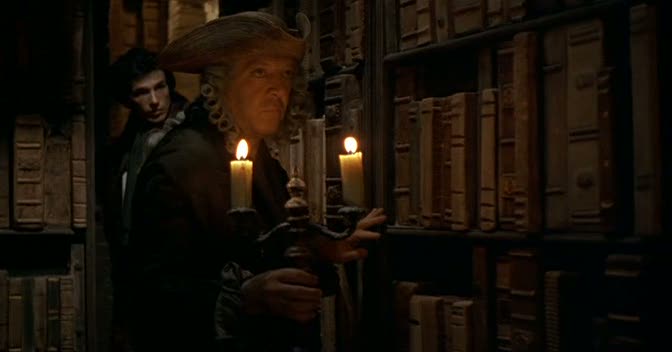
T - I noticed two figures of ferrymen: the little girl carries information from one world to another, the converse ferries Giacomo from one shore to the other of the lake. Is this affinity between them intentional?
PA - I am sincere, I admit I have not imagined them like this.
T - So the conversation in league with Nerio is not Charon? I think of your great interest in Dante.
PA - You can imagine it like this.
T - But the little girl is from an episode that happened in your family.
PA - Yes, the resurrected one. A girl suffering from severe fevers, she had been given extreme unction, after which she appeared dead. A few hours later she jumped out of bed and asked for her noodles. Above all, she guided me through the thought of the most beautiful scene she has ever seen in a film: the girl who opens her eyes in the Dies Irae by Carl Theodor Dreyer. A scene, an image with a beauty, a grace… [10] as I told you, inspiration. The rest comes later, undoubtedly what I read emerges, more or less unconsciously ... but I am guided above all by the images.
T - I find the first scenes of The arcane charmer, from the glimpses of Todi to the pact with the lady up to the meeting with the resurrected child, the most beautiful moments of the film, and I consider one of the most beautiful horror scenes I have seen the dialogue during which Giacomo makes a blood pact with the lady who speaks to him from behind a fresco, disguised as an owl: a very eloquent nocturnal and "demonic" symbol. Both Giacomo and the viewer know clearly what declaration lies behind this image, without having to explain it in words: his message is as clear as it was written, or even more. This eloquence made me think of the predilection of a certain culture - that of the tarot, for example - for symbolic rather than verbal language. The scene of the owl seems to me to sum up this idea, this culture of the symbol.
PA - I did not have the ambition to make such an important speech: I am sincere, and I tell you that behind what I stage there is above all inspiration: I stage what I imagine, the reasoning comes later. But I recognize what you are saying: it is a speech close to that of Fulcanelli, that alchemist who demonstrated that cathedrals are built following a precise symbolic language. But I was mainly interested in telling a story, depicting fascinating scenes. If you say that the owl scene fascinated you, I am happy because that was my purpose. Then you can discuss what's behind it ...
T - It seems to me that the element, the central image of the film, is the hands. Giacomo and the lady make a pact with an engraving on her hand, then the little girl brings Giacomo a message from her mother by tracing a design on the back of her hand; therefore, Monsignor lacks a hand, and this very missing hand will be the key to solving the mystery, as well as the gloved hand of the lady. Where does this idea come from?
PA - To choose the theme of the severed hand, I followed the inspiration that gave me an image in a tarot ...
T - The thirteenth? [11]
PA - You think, we were talking about significant coincidences. In fifty years of making films, only once has a boy without a hand appeared at the auditions for supporting roles. When did it happen? During the preparations for The arcane charmer! I've made dozens of films, and the only one for which a boy with a broken hand showed up was the one in which the protagonist is missing a hand! On set we were all stunned.
T - Did you then hire the boy?
PA - No. Hiding Cecchi's hand was complicated. Now it's so simple, with digital you can make it disappear or appear… but we shot everything with artisanal means. What's the biggest trick in the film? That candlestick that rises and falls ...
TA - There are also the flying chalice, the bat, the fiery ghost ...
P - All handmade things! Very complex to make. Magical.
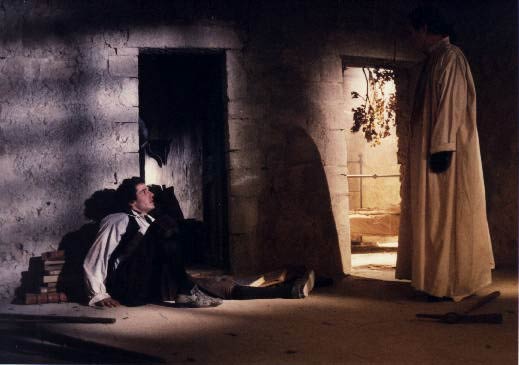
In the same year as The arcane charmer, Avati will present Festival Cosa Sarà, a dramatic film starring Massimo Boldi (the Bolognese filmmaker often lets comedians experiment with roles that are not usual for them: think also of Christian De Sica in The youngest son, Ezio Greggio in Giovanna's father and the formidable performance of Renato Pozzetto, in his splendid first tragic role at the age of 80: She still talks to me; the first of these "converts", Diego Abatantuono, thanks to Regalo di Natale will begin a good "serious" career) in the role of a comedian in crisis. A long period without horror in Avati's filmography will begin with Festival, an abundant decade (with the exception of one Satanist initiation scene in The knights who made the feat, 2001): since 1996 (The arcane charmer) to 2007 (The hiding place).
To 1994 (two years before The arcane charmer) dates back to the US trip (three years later Bix - A legendary hypothesis) For The childhood friend (the first of two thrillers shot by Avati in the USA: to follow, in 2007, The hiding place starring Laura Morante). Between The childhood friend (story of an executioner TV host persecuted by a college friend, with the prelude of Parsifal by Richard Wagner on the opening credits) e The arcane charmer there is a short (five episodes) television series conceived and written (but not directed: the direction was entrusted to the Roman Fabrizio Laurenti, aka Martin Newlin) by Avati for RAI, Voices of the night (1995). Currently out of business [12], Voices of the night is a "cult" for Italian horror experts.
Protagonists Lorenzo Flaherty and the veteran of Avatian cinema Massimo Bonetti, with a role assigned to the American Jason Robards III (former protagonist of The childhood friend), recounts the investigations concerning the sacrificial murder of an architecture student. Set in a contemporary Rome at least as disturbing as that of The sign of command (epochal RAI drama of 1971), Voices of the night he was the victim of a botched television programming and gods claims of (powerful) circles who recognized themselves in the bloody "Theosophical Society for the return to the Original Spirit" of the show; but it remains a very valid continuation of The arcane charmer: his update to the present day, and a beautiful trip to the Capitoline in the "Gotico Padano".
Among the films just mentioned, the one closest to The arcane charmer and maybe The hiding place: like Stefano Dionisi's Giacomo Vigetti, the nameless woman played by Laura Morante is irresistibly attracted to a mystery whose solution she cannot give up looking for (so does Stefano, the character of Lino Capolicchio in The house with laughing windows); as the renegade seminarian of The arcane charmer, she carries on her conscience a guilt that forced her to abandon her previous life (she spread slanders that were lethal to her husband); like him, she is on the verge of madness (Giacomo is presented, when he tells the story of him at the beginning of the film, delirious in a cell; "She" has returned from a very long stay in a psychiatric clinic).
The story of both involves (as well as The house with laughing windows, Zeder and further on Mr. Devil) unfrequented priests, or even damned, or at least ambiguous and dishonest: not The arcane charmer, Giacomo is a former seminarian hunted by the Inquisition, and sent to the service of a priest suspected of heresy; in The hiding place, "She" stumbles upon the crimes that occurred decades earlier in a residence of nuns and converse, and has the ingenuity to entrust herself to Father Emil (played by Treat Williams), a 'pious' and spoiled priest who, in order to preserve his privileges (yes see what restaurant he can afford to dine in) contributes to the silence reigning in the town (Davenport, Iowa: the Avati brothers bought the house - renamed, in The hiding place, "Snakes' Hall" - by jazz musician Bix Beiderbecke, dedicatee of the biographical film Bix - A legendary hypothesis, presented in 1991 in Cannes) theater of crimes.
We said, "Snakes' Hall": ne The hiding place, the beautiful unnamed woman played by Laura Morante plans to open an Italian restaurant in the disturbing mansion surrounded by the reputation (scattered to cover the bloody facts that really happened there) of being built on an Indian cemetery. The reference to The Shining, a Stephen King novel and a Stanley Kubrick film. A reference that unites even more The hiding place to thearcane charmer, that quotes from King's book and Kubrick's milestone in horror cinema have two: the little sisters (both Giacomo and little Danny see both "whole" and corpses) and, even more clearly, Carlo Cecchi breaks down a door to ax strokes, as Jack Nicholson did (with a hatchet instead) as Jack Torrance in a very famous scene of Shining.
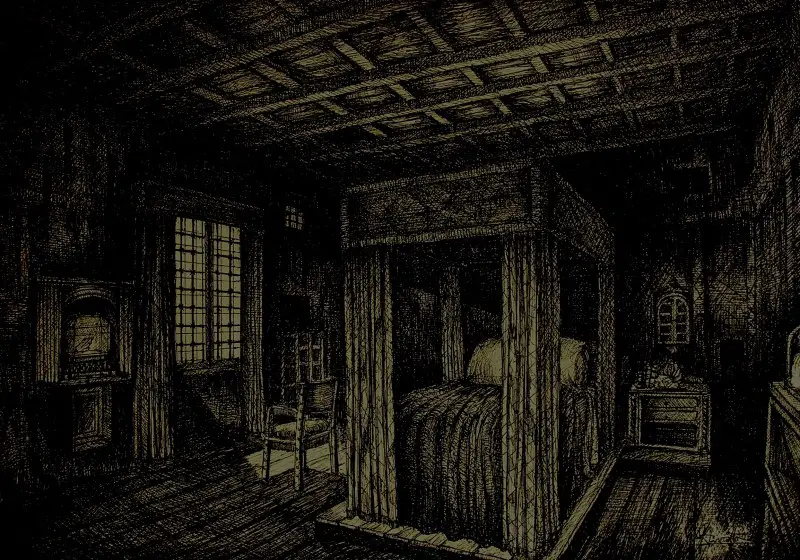
Pupi Avati acknowledged that "without Carlo Cecchi the film could not have been made". Among the many elements that make de The arcane charmer a great film, there is also the interpretation of the Florentine theatrical actor; yet, the film should have had as a protagonist Marcello Mastroianni, who had invited Pupi Avati (“the only great Italian director in business for whom I have not yet acted”) to lunch, confiding in him the intention of making a film together. However, the still very active star of Fontana Liri was dying, so the role of the Arcanum Enchanter, although written with Mastroianni in mind, was entrusted to Cecchi [13].
Avati defined the duet of Cecchi and Dionisi, the expert and taciturn theatrical player and the good-looking young actor, a "boxing fight". Around them, various characters dear to the Avatian public: Arnaldo Ninchi, Renzo Rinaldi (then popular for a cookie advertisement), Eliana Miglio (also in a moment of television fame), Consuelo Ferrara, Saverio Laganà; in addition to Vittorio Duse, Mario Erpichini, the comedian Michelangelo Pulci (from the Genoese group of Cavalli Marci).
The deal with the checkers and the finale were shot a Todi (city dear to the director): on the steps of the cathedral, at Sources of Scarnabecco and in Pongelli Palace. The (deconsecrated) church outside which Giacomo receives a message from his mother from Purgatory from the resurrected child is that of S. Girolamo at the castle of Rota, in the municipality of Tolfa (in the province of Rome); the fortress in which Monsignore is exiled is the Petaccioli Castle (in Todi).
Director of photography is the very trusted Cesare Bastelli; the music, awarded with the Silver Ribbon, is by Pino Donaggio (the Venetian musician with a double life: first singer of the Sanremo super-hit I who do not live (without you), then well-known composer of soundtracks, especially for Brian De Palma, but debuting with In Venice… a shocking red December by Nicholas Roeg, taken from the short story by Daphne Du Maurier), who will also music for Avati Festival Cosa Sarà. The cerulean eyes that emerge behind the owl mask are by Marina Francini, decorator of the film (creator of the opening credits and of the painting behind which the lady speaks); but her voice is not hers.
The nursery rhyme sung by the lady before and after the meeting with Giacomo is one prayer to Our Lady of the poet king Alfonso X "el Sabio" of Castile:
Rose of roses, flower of flowers,
Woman of women, Lady of gentlemen;
Rose of beauty and charm,
Flower of happiness and joy,
Woman in being pitiful,
Lady in taking away pains and pains ...
What Pupi Avati says, out of modesty, is not contradictory. Inspiration and erudition are not mutually exclusive: just like his search for images to stage and the documentation with which he writes the screenplay. Does this double register also apply to the interpretation that can be given of the film?
Giacomo's is an initiatory - bankruptcy path, such as that of J. Robards / Alan Gardner in The childhood friend, (despite the auspicious, wonderful Wagnerian notes of the Parsifal)? Yet another fable of punished curiosity, as happens to the two Stefano protagonists of The house with laughing windows (Lino Capolicchio) and Zeder (Gabriele Lavia)? Dispassionate praise of the spiritual quest, whatever it costs (but unlike the two Stephen mentioned, and "You" in The hiding place, Giacomo has concrete reasons for solving the mystery: the others, on the other hand, are irresistibly attracted to you, they are creatures from Elsewhere)? [14] The recurrence of the themes suggests a coherent discourse.
For example, Avati considers priests liminal figures, between two worlds (one visible, one occult): and in his horror films, anomalous priests recur: some are not what they say (The house with laughing windows), others have been defrauded (Zeder, Monsignor in The arcane charmer) or more seminarians have been expelled (Giacomo); or are they just lazy and greedy (The hiding place). The review of Mr. Devil: a parish priest in league with the Satanists, a fanatic sexton, a hallucinated exorcist. Speech that returns with force and evidence in The arcane charmer: Giacomo and Monsignore consume their existence (one damaging himself, the other extinguishing a health already undermined by syphilis with bloodletting) in the search for answers that they cannot find "here", on the visible side of the threshold.
Or you can let yourself be guided by simple inspiration, and read the film with only your imagination, look at its most immediately visible aspect: a beautiful one remains. horror story. Avati's erudition is thus not lost: it remains in the beauty of the film, in this beautiful glimpse of the eighteenth century, in the intelligence of the staging, in this bewitching and terrifying story. Read in depth or simply observed, The arcane charmer is a great horror film: and makes Pupi Avati a reference point for international horror, as already happened with The house with laughing windows (1976) and Zeder (1983), and how it will be reconfirmed by Mr. Devil (2019)
Note:
[1] On the Davinotti.com website you will find a very detailed reportage on the locations of the film: “The exact locations of the Arcane Enchanter”.
[2] It is a hydroelectric basin, formed in 1962 with the construction of a dam along the river Tiber.
[3] Song by Kate Bush, playful tribute to Hammer Film Productions.
[4] "The film that I like best among my goths, L'arcano incantatore, is decidedly metaphysical, the one that is most confronted with another dimension and has plots that are unfathomable" (Interview released to R. Adamovit & C. Bartolini, The Po Valley Gothic. Dialogue with Pupi Avati; Bietti, Milan 2019; page 192.).
[5] The contradiction Avati runs into out of modesty can also be seen in the interviews collected by R. Adamovit and C. Bartolini in Il gothic padano. Dialogue with Pupi Avati: there too, the Avatian claim of having been guided by simple inspiration, is counterbalanced by the evidence of a cultured and documented preparation.
[6] Stefano Dionisi had just returned from the international success (Oscar nomination and Golden Globe win for best foreign film) of the Belgian film Farinelli - Voce regina (G. Corbiau, 1994); with all its inaccuracies (above all, the defamation of Handel) an eighteenth-century reconstruction much more worthy than the one, dating back ten years earlier, of what is perhaps the best-known eighteenth-century film, the execrable Amadeus ( M. Forman, from a musical by P. Shaffer). In the same year of the Hollywood blockbuster, Pupi Avati himself dedicated a film to Mozart's stay in Bologna as a teenager: Noi tre, with Lino Capolicchio in the role of Leopold Mozart, father of Wolfgang Amadeus.
[7] For the history of cryptography see I. P Culianu, Eros and Magic in the Renaissance (Bollati Boringhieri, Turin 2006): the particular one he writes about the Steganographia of Abbot Tritemio of Wurzburg, teacher of Cornelio Agrippa (chapter 5, " Pneumatic magic ", page 189).
[8] The bibliography of the film was studied by Andrea Scarabelli: “Diabolus in pellicula. Excavation in the occult of The arcane enchanter ”, essay available on http://www.bietti.it, site of the Bietti publishing house. Scarabelli writes: "the book around which the narration revolves, the Pseudomonarchia daemonum of the Dutch doctor and demonologist Johann Weyer (1515-1588), a pupil of Cornelio Agrippa of De Occulta Philosophia ... Weyer went down in history for his De praestigiis daemonum et incantationibus ac veneficiis, concluded in 1562 and published in Basel the following year… in opposition to Sprenger & Kramer's Malleus Maleficarum (1487), criticized the witch trials… rejecting the very idea of a “witch” ». Scarabelli then cites the novel Gomòria (1921) by Carlo H. de 'Medici, which Italianizes Weyer's name in: John Wierus of Brabant. Finally, quoting Scarabelli: "Thanks to Mondadori's commitment, an extract from De praestigiis invaded Italian bookstores in 1994, translated and edited by Pietro Pizzarri, a scholar of angelology and demonology, as well as the creator of a curious edition of the Necronomicon, the" pseudobiblium " from
Lovecraft. Two years after this first and only Italian edition, we find it in L'arcano incantatore, used by Monsignor to encrypt his letters and by Nerio to carry out evocations and materializations. This is revealed by the notes found by Giacomo in the filthy attic where the scriptural lived, precise quotations from Weyer 's book ».
[9] F. Greco & R. Leggio, The Lovecraft Mystery - Road to L. (2005)
[10] Here our interview came to a halt: Maestro Avati was moved by thinking of Dreyer's Dies Irae.
[11] In the thirteenth major arcanum (commonly, and not quite appropriately, called "Death") of the tarot, severed hands appear on the field covered by the central figure (thus in the Marseillais Tarot of Conver and in those of Wirth; the hands on the ground are instead absent from the card in question in the Rider-Waite tarot).
[12] Voices of the night, however, is visible on the internet: in streaming, or on YouTube, where it is available both in episodes and in a single seven-hour and six-minute film ("Voices at night (complete series)": https://www.youtube.com/watch?v=gZAzsluEwQE ).
[13] Avati's praise for Cecchi, and the story of the meeting and the lack of collaboration with Mastroianni can be found in A. Maioli, Pupi Avati. Dreams, nightmares, visions (ed. Cineteca di Bologna, 2019).
[14] Precisely about "She" -Morante and Giacomo-Dionisi, Pupi Avati says: «They are characters carrying tensions with regard to this seductive mystery of the afterlife, of the elsewhere, which they feel close to and from which they do not know how to free themselves. They are people who have some problems ”(interview with Adamovit & Bartolini, op. Cit., Page 157).
[15] He declares it in the interviews with Adamovit & Bartolini: «As a Catholic and a believer, I also consider the priest" different ". In my gothic films ... there is always a man of the church with something strange [...] This is because I was brought up to see the religious as something different, which does not move in the same dimension as us but a little higher, and he lives in an interregnum between earth and heaven or between earth and hell ... he has a certain habit with elsewhere "(op. cit., p. 156).

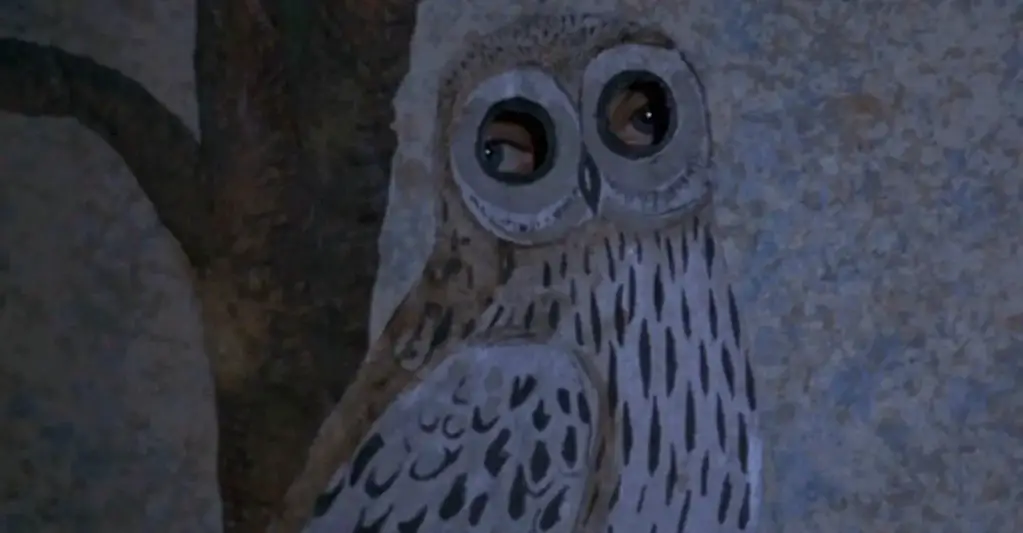
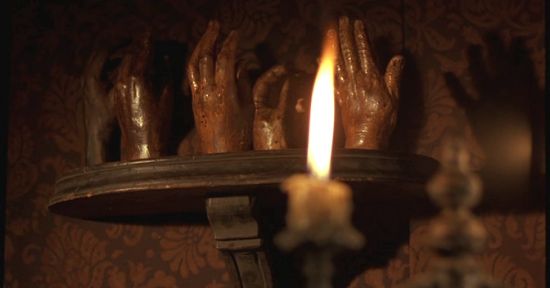

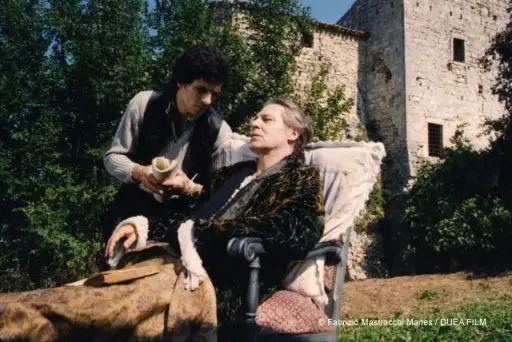

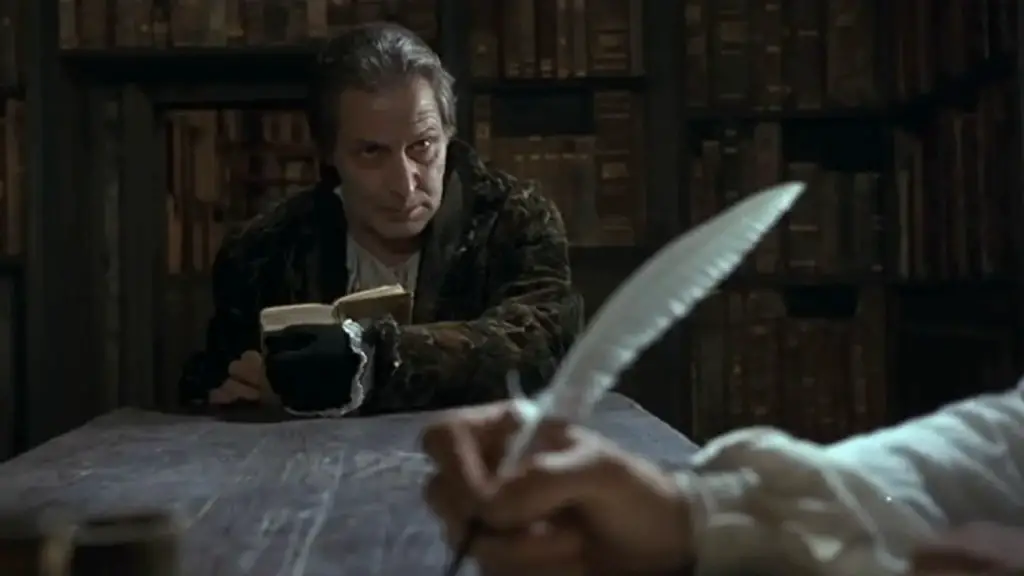
4 comments on “25 years of "Arcano Enchanter": conversation with Pupi Avati"